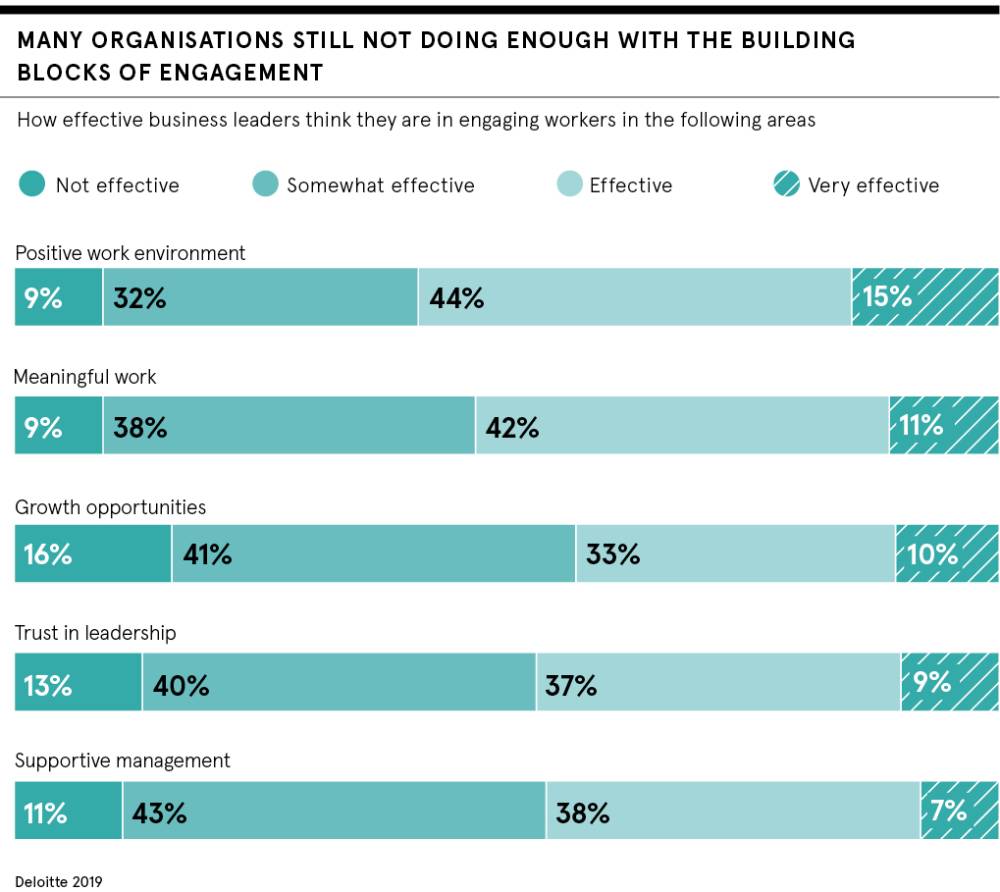Throughout lockdown Paul Stobart has posted video blogs twice a week for his company’s 600 staff, giving anxious employees updates from the top. The chief executive of broadband company Zen Internet hadn’t vlogged before and admits to occasionally muddling words and stuttering over sentences. But he believes employee engagement, through open and honest communication, has never been so necessary, even if it has never been so difficult.
Zen staff think so too as more than 500 tune in to each update. According to company human resources director Ayshea Robertson, along with other measures such as virtual social activities, the vlogs are successfully keeping employees engaged at a time when most are physically distant.
The COVID-19 pandemic has certainly brought concepts like employee engagement and performance management into sharp focus. Businesses are relying on the commitment of staff who are either working remotely or, in some cases, currently not working at all.
“Leaders and managers need to engage with people very regularly during this time when so many employees are working remotely,” says Jenny Perkins, head of engagement at leadership consultancy Cirrus. “Ask people what’s working well for them and what’s not. Check how they feel and demonstrate empathy.”
But COVID-19 or not, the link between employee engagement, performance management and business success is well established. Research from the Massachusetts Institute of Technology has found that innovation, customer satisfaction and profits all rise in tandem with positive employee experience.
As Rick Kershaw, chief people officer at engagement software company Peakon, says: “Employers have increasingly been recognising that engaged employees are the most critical drivers of business success. When employees are engaged, they are more productive, more motivated and stay longer with a company.”
That’s borne out in offices, warehouses and workshops around the world. Emma Storer, group people manager at UK-wide accountancy group Haines Watts, says the benefits of engagement go far beyond productivity. “Engaged employees are more likely to seek out learning and development opportunities and advance their careers, to the benefit of themselves and the business,” she says.
But if employee engagement works, why isn’t everybody doing it? A Gallup poll found a staggering 87 per cent of employees worldwide are not engaged. One upshot of this, according to another, pre-COVID study, is a third of workers plan on moving jobs in the next 12 months.

Replacing experienced staff is hugely expensive. And even before they leave, demotivated employees can undermine performance standards and leave a trail of unhappy customers. Researchers have even tried to put a value on the cost to businesses of disengaged employees, pitching the figure at thousands of pounds per employee a year.
That’s not surprising. Research also shows that unengaged staff take more time off sick, lower team morale and have more accidents at work. So if the stakes are so high, why do businesses take the risk?
It’s likely that many don’t think they are. Instead, they mistake perks and piecemeal employee development initiatives for a true employee engagement strategy. “An error that many businesses make is believing employee engagement is a quick fix, solved with some new perks or the occasional free lunch. But it’s not as simple as that,” says Kershaw.
So what is it? Perkins at Cirrus advocates a ‘“know, think, feel, do” model of employee engagement. Staff who know what an organisation’s purpose is will think harder about their part in it. If they feel valued, they’ll do more to make a difference.
“People want to feel connected and they want their contribution to be recognised. When people feel this way, they are more likely to go the extra mile,” she says. “Your people become genuine advocates for your business and care about customer satisfaction.”
Highly engaged staff adapt to challenges
For “know, think, feel, do” to be effective, communication is crucial. Zen uses multiple channels to communicate with staff, to suit the preferences of different individuals. They include a regular employee-led internal newsletter, monthly executive committee talks open to everyone and regular themed events, as well as video updates from the boss during lockdown.
Businesses mistake perks and piecemeal employee development initiatives for a true employee engagement strategy
Like Zen, Haines Watts encourages two-way dialogue. Last year the company ran a group-wide survey of all employees, based on eight key criteria for employee engagement. The results of the survey inform its 2020 group people plan, aimed at improving performance through engagement and collaboration.
Peakon’s Kershaw agrees that any employee engagement strategy starts with listening. “Only when you continuously stay on the pulse of your employees’ concerns, and work to make improvements, will you see your employee engagement rise,” he says.
In other words, successful employee engagement, and with it performance management, is about culture as much as strategy. Leadership consultant Anni Townend says it’s down to business leaders to create a “three Cs” culture of curiosity, courage and care to encourage engagement.
“Good leaders listen to, understand and learn from others, rather than simply giving opinions. They are curious and ask expansive questions. They invest in relationships and look out for their people. When staff feel respected, trusted and valued, they are willing to do more. Engaged teams are adept at harnessing collective intelligence, learning through failure, imagining the future and adapting to market challenges,” she concludes.






